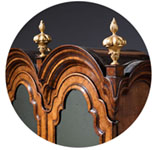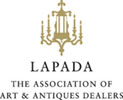Extremely Large William and Mary 17th Century Olive Oyster Cushion Mirror c.1690
Sold
Request Information
Follow Us
Extremely Large William and Mary 17th Century Olive Oyster Cushion Mirror c1690
An extremely large and rare William and Mary 17th century 41 inch olive oyster cushion framed mirror, circa 1690 England.
The age patinates mirror palte is bordered by a fine cross-grain ovolo moulding. The pulvinated frame is decorated entirely in well-chosen book-matched sections of olive oysters and edged with a beaded ovolo cross-grain moulding.
It should be noted that this is an extremely large example with a bold pulvinated frame that can only be described as stately.
The mirror is of a scale that would suit as an overmantel, console or above a large case piece.
Superb patinated surfaces.
Condition
Good. Wear consistent with age and use.
Dimensions
Height: 41.34 in. (105 cm)
Width: 32.68 in. (83 cm)
Depth: 2.96 in. (7.5 cm)
PREVIOUSLY SOLD
No Results Found
The page you requested could not be found. Try refining your search, or use the navigation above to locate the post.
No Results Found
The page you requested could not be found. Try refining your search, or use the navigation above to locate the post.
YOU MAY ALSO LIKE
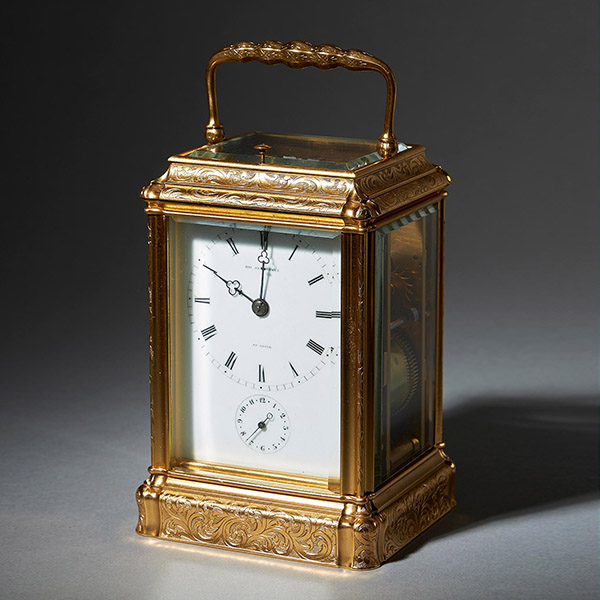
Engraved Eight-Day Striking and Repeating Carriage Clock by Perregaux Au Locle
Engraved Eight-Day Striking and Repeating Carriage Clock by Perregaux Au Locle Follow UsEngraved Eight-Day Striking and Repeating Carriage Clock by Perregaux Au Locle The superb engraved gilt gorge brass case has facetted glass panels to all...
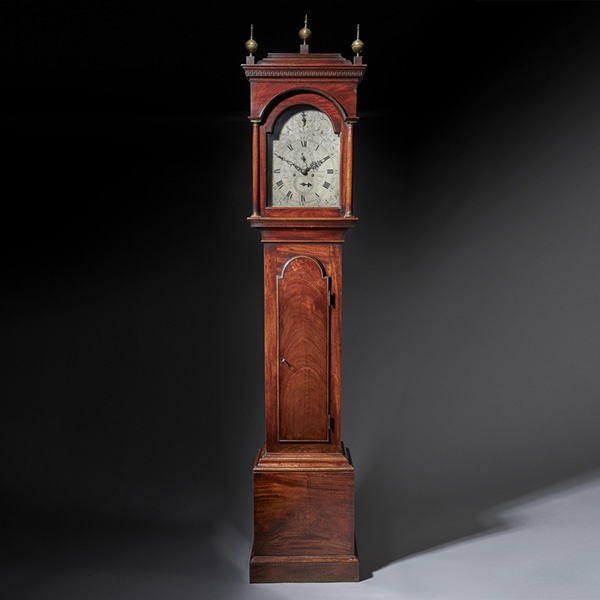
Fine George III 18th Century Period Mahogany Longcase Clock by Tomas Fowle
18th Century Period Mahogany Longcase Clock by Tomas Fowle £12,995 Follow Us18th Century Period Mahogany Longcase Clock by Tomas Fowle A fine George III period mahogany longcase clock of excellent colour, patination and proportions, circa...
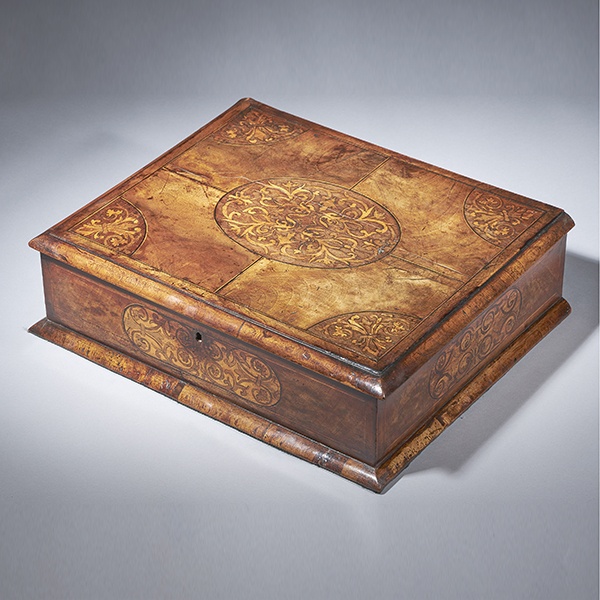
17th Century Figured Walnut and Seaweed Marquetry Lace Box
17th Century Figured Walnut and Seaweed Marquetry Lace Box £3,600 Follow Us17th Century Figured Walnut and Seaweed Marquetry Lace Box A fine and extremely rare figured walnut and seaweed marquetry 'lace box', circa.... let’s break it down -...
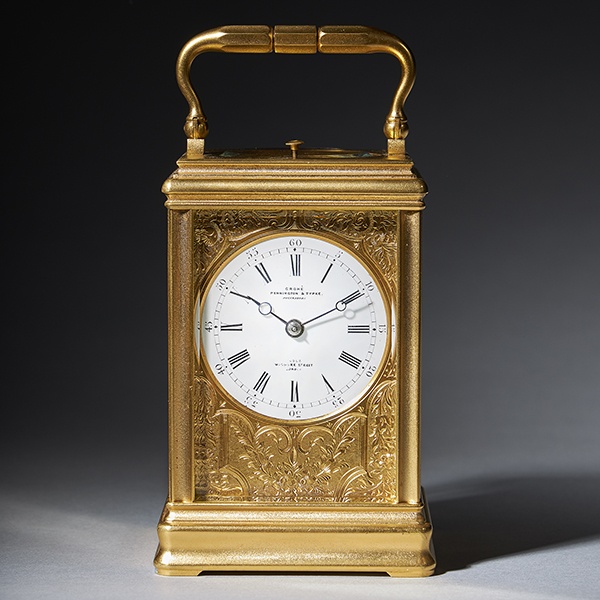
19th Century Repeating Gilt-Brass Carriage Clock by the Famous Drocourt
19th Century Repeating Gilt-Brass Carriage Clock by the Famous Drocourt £5,600 Follow Us19th Century Repeating Gilt-Brass Carriage Clock by the Famous Drocourt A superb repeating carriage clock with a gilt-brass gorge case by the famous maker...
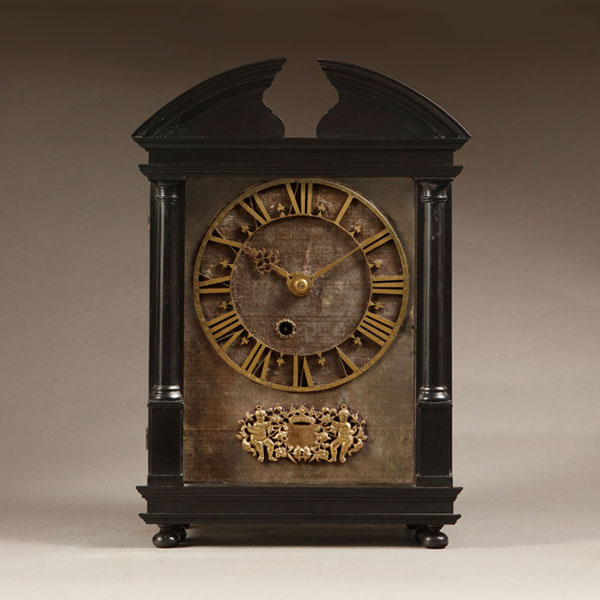
17th-Century Hague Clock Signed by Pieter Visbagh, circa 1675
Small 17th Century Hague clock made c. 1675 by Pieter Visbagh, who was apprenticed by Salomon Coster. The latter made the first pendulum clock according to the instructions of Christiaan Huygens, the internationally renowned scientist who developed the idea of applying a pendulum to a clock movement.
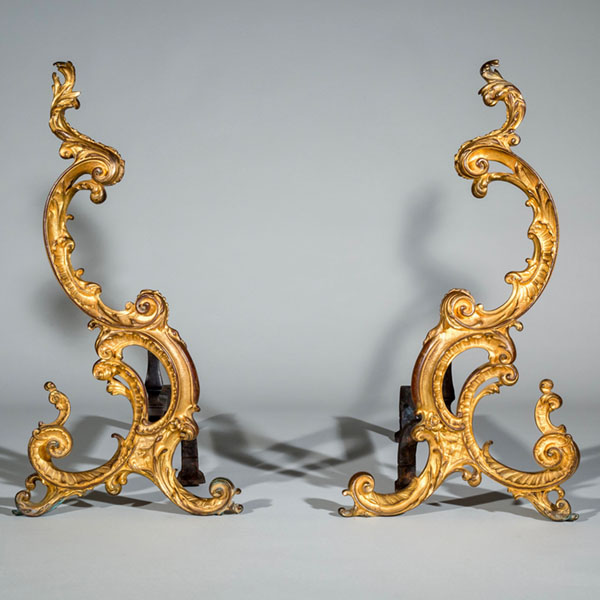
Pair of 18th-Century English Rococo Gilt Bronze Andirons or Firedogs
An exceptional pair of 18th century English Rococo gilt bronze andirons or fire dogs.
The bold shape of these andirons relate to designs of Thomas Johnson (1714–1778), one of London’s pioneers of the ‘Modern’ or French style, later known as Rococo.

Engraved Eight-Day Striking and Repeating Carriage Clock by Perregaux Au Locle
Engraved Eight-Day Striking and Repeating Carriage Clock by Perregaux Au Locle Follow UsEngraved Eight-Day Striking and Repeating Carriage Clock by Perregaux Au Locle The superb engraved gilt gorge brass case has facetted glass panels to all...

Fine George III 18th Century Period Mahogany Longcase Clock by Tomas Fowle
18th Century Period Mahogany Longcase Clock by Tomas Fowle £12,995 Follow Us18th Century Period Mahogany Longcase Clock by Tomas Fowle A fine George III period mahogany longcase clock of excellent colour, patination and proportions, circa...

17th Century Figured Walnut and Seaweed Marquetry Lace Box
17th Century Figured Walnut and Seaweed Marquetry Lace Box £3,600 Follow Us17th Century Figured Walnut and Seaweed Marquetry Lace Box A fine and extremely rare figured walnut and seaweed marquetry 'lace box', circa.... let’s break it down -...

19th Century Repeating Gilt-Brass Carriage Clock by the Famous Drocourt
19th Century Repeating Gilt-Brass Carriage Clock by the Famous Drocourt £5,600 Follow Us19th Century Repeating Gilt-Brass Carriage Clock by the Famous Drocourt A superb repeating carriage clock with a gilt-brass gorge case by the famous maker...

17th-Century Hague Clock Signed by Pieter Visbagh, circa 1675
Small 17th Century Hague clock made c. 1675 by Pieter Visbagh, who was apprenticed by Salomon Coster. The latter made the first pendulum clock according to the instructions of Christiaan Huygens, the internationally renowned scientist who developed the idea of applying a pendulum to a clock movement.

Pair of 18th-Century English Rococo Gilt Bronze Andirons or Firedogs
An exceptional pair of 18th century English Rococo gilt bronze andirons or fire dogs.
The bold shape of these andirons relate to designs of Thomas Johnson (1714–1778), one of London’s pioneers of the ‘Modern’ or French style, later known as Rococo.
